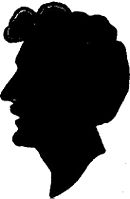Schwarzkopf (cosmetics)

Schwarzkopf is an umbrella brand of the Henkel Group , under which various hair cosmetics brands of the Beauty Care division are grouped together. Schwarzkopf products are sold in more than 125 countries.
history
The brand goes back to the chemist and pharmacist Hans Schwarzkopf , who opened the "paint, drug and perfume store" on Passauer Strasse in Berlin-Charlottenburg in 1898 . A customer in England had got to know a powdered shampoo and wanted the druggist to order it for her. Hans Schwarzkopf put her off several times until one day she stopped appearing. Instead, he got the idea to develop such a product himself. After several years of development work, Hans Schwarzkopf brought a shampoo in powder form onto the market in 1904. It cost 20 pfennigs per bag (for one treatment), was dissolved in water and proved to be superior to all hair-washing soaps available at the time in terms of convenience. The "shampoo with the black head" became the first branded hair cosmetic item in Germany. Due to the success, Hans Schwarzkopf gave up his drugstore in the same year and concentrated on production and marketing.
In 1903 Schwarzkopf developed the first powder shampoo that was dissolved in water, he called it "Shampoon". International sales contacts with the Netherlands and Russia followed. In 1919 "Shampoon" was renamed "Schaumpon". With the introduction of the first liquid shampoo on the European market in 1927, the Schwarzkopf company succeeded in another product innovation , demand allowed its business to grow rapidly and led to the opening of the very first training center for hairdressers: the "Schwarzkopf Institute for Hair Hygiene" in the Tempelhofer Schwarzkopf -Work .
With “Onalkal” in 1933, the world's first soap-free, i. H. Alkaline-free shampoos launched; it is considered the prototype of all modern shampoos. In addition to hair care products, permanent waves also formed part of the product range. In 1947 Schwarzkopf introduced “Onaltherma”, the first “cold permanent wave” on the German market, which made it possible to permanently wave the hair without having to heat it to almost 100 degrees; “Cold waves” had long enjoyed great popularity in the USA . In addition, “Poly Color”, hair coloring for end users, came onto the market this year.
After the Second World War, the company's headquarters were relocated from Berlin to Hamburg . In 1949, Schwarzkopf launched the “Schauma Creme-Schaumpon” in a metal tube, a product on the German market that soon caught on. The “ Schauma ” brand became synonymous with shampoo in West Germany . The first hairspray , "Taft", hit the market. The verb "taften" developed into a synonym for "spraying hair with hairspray" in Germany during the economic miracle .
With the Schwarzkopf method , a new systematic concept consisting of advice , products and training was developed in 1972 . As early as 1980, Schwarzkopf was the first international cosmetics manufacturer to switch to CFC- free, more environmentally friendly propellants for its sprays.
In 1995, the Düsseldorf-based Henkel Group acquired the company from the Schwarzkopf family and the former Hoechst Group and suddenly became one of the leading European providers of hair cosmetics. While hair products for consumers are now being developed and sold from Düsseldorf, business with professional customers such as hairdressers remained in Hamburg (Schwarzkopf Academy on Jungfernstieg ).
Schwarzkopf is the organizer of the “Hairdressing Award Austria”.
Brands
The Schwarzkopf brands are divided into the areas of Retail (end-consumer business) and Professional (hairdressing business).
The retail sector is aimed at end consumers and consists of hair care, styling and hair coloring products. In addition to poly, taffeta and seborine, it also includes Gliss Kur. In 2004, the Got2B brand, based on street styling trends, is launched in European retail .
The professional area is aimed at hairdressers and stylists, 1956 with the “Igora Royal” brand. In 1991 the semi-permanent hair coloring based on plants "Igora Botanic" is introduced. In 2000 the styling brand “OSIS” comes onto the market, in 2003 the hair spa line “Seah”, in 2009 the brand “Essensity”, which strongly communicates the use of natural raw materials .
literature
- Art. Schwarzkopf . In: Florian Langenscheidt (Ed.): Deutsches Markenlexikon . Editions GmbH, February 2008, pp. 940 f., ISBN 978-3-8349-0629-8 .
Web links
Individual evidence
- ↑ Trademark register
- ↑ Chronicle of 130 Years of Henkel on henkel.de, PDF document, 14 MB, accessed on November 10, 2014
- ↑ Freed from the current - on a new permanent wave . In: Der Spiegel , July 10, 1948
- ↑ Henkel benefits from Schwarzkopf. In: Hamburger Abendblatt
- ↑ IGORA. In: schwarzkopf-professional.de. Retrieved June 1, 2016 .

